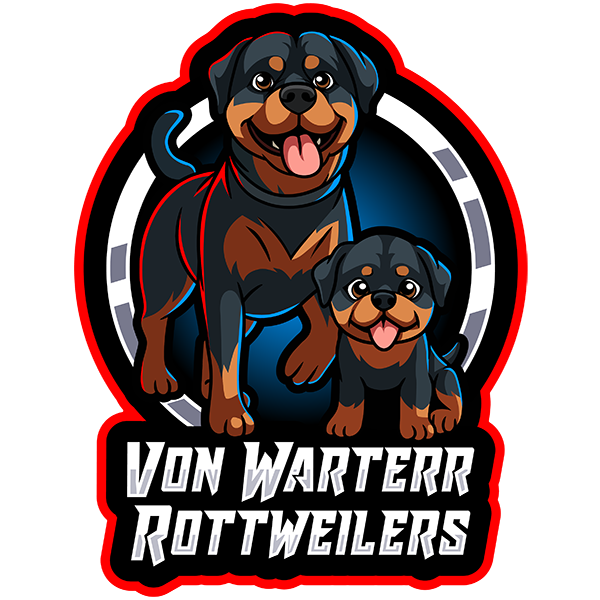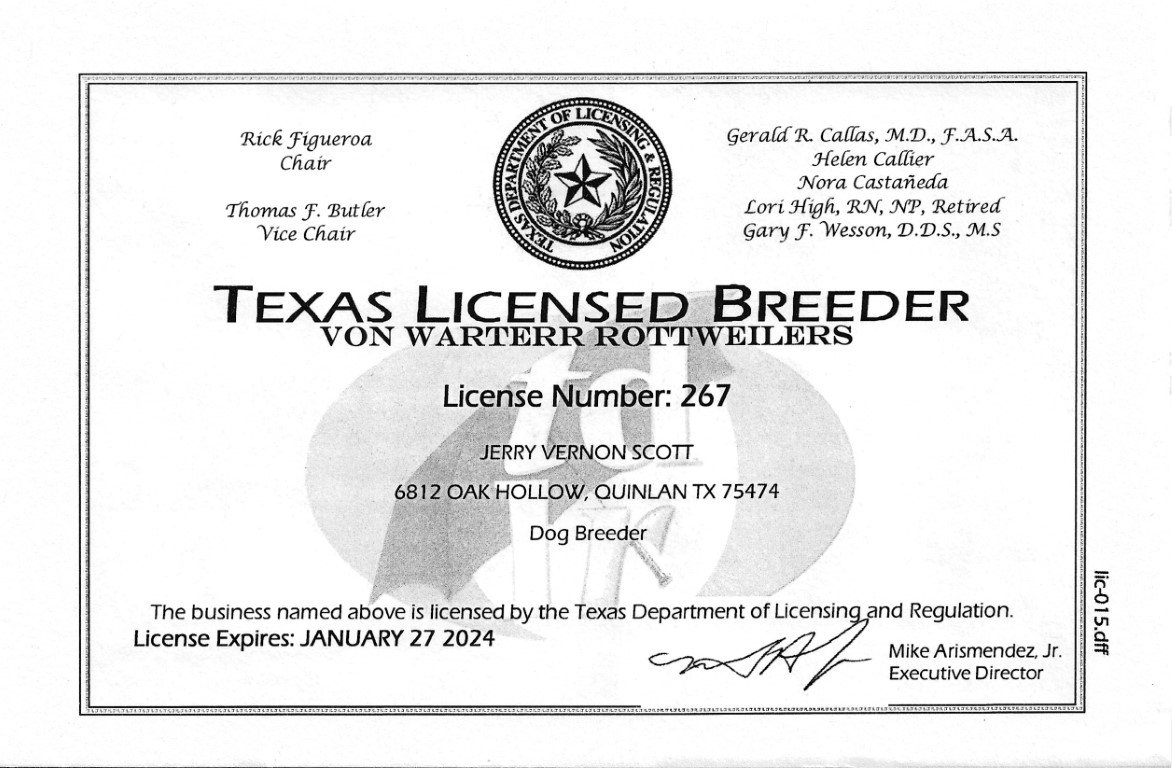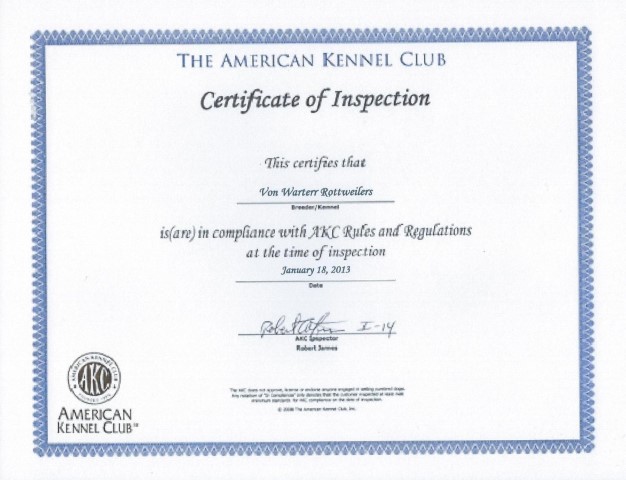Article 4 - Picking a Puppy: Which One Is Right for Me?
Posted on April 12th, 2015
You carefully selected your breeder. You chose which breeding interested you based on the sire and dam. Now you have to pick which puppy from the litter is the right one for you. Prior to committing to purchase a puppy from this litter, you should have a written agreement with the breeder detailing which pick you get and at what age you will make your selection. It is recommended that you make your choice between the ages of 6-8 weeks, and the later the better. You should visit the litter at least once after 5 weeks of age before making your final visit for the selection process. The litter should be marked either by a form of permanent identification or at least colored collars so you can take pictures for comparison. At the agreed upon age for selecting your puppy, have a scheduled appointment for evaluating the litter. Let the breeder know ahead of time that you will need a minimum of one hour to interact with the pups. Ask for an appointment time in between feedings so the pups will be somewhat hungry and active. Bring with you a checklist of desired traits that you have prioritized according to their importance to you.
The puppy selection process should begin with eliminating the undesirables. The first thing you should eliminate is a gender. Will you be getting a male puppy or a female puppy? Of course, this decision should have already been made and communicated to the breeder. Both genders make excellent canine companions. It really is a matter of preference. Typically, females can be easier to live with except for when they come into season twice a year. As a general rule, it has been my experience that females tend to be more affectionate and less independent but really temperament is more of a pecking order factor than it is gender related. One thing to keep in mind when deciding upon what sex dog you obtain is that males if left intact have a tendency to mark their territory. You will want to be aware of this issue if the dog is to live in your home. Separate all of the pups of your desired gender from the rest of the litter and now you are ready to begin eliminating the pups that are obviously inferior in quality. If there are any pups that you automatically know you are not interested in from just a quick initial look then have the breeder remove those. Now all of the remaining ones are your potential pick so it is time to make a thorough evaluation of each pup. You will want to evaluate health, structure, cosmetics, type and temperament.
Begin by checking out their physical health. The eyes should be clear and bright. Check the eye lids carefully and make sure they do not sag nor roll in or out. This is known as Entropion or Ectropion and is a definite health problem. The inside of the ears should be pinkish in color and relatively clean. Check for signs of yeast or mites. Look in the ears and smell the ears. Make sure the gums have good color. Pale gums could indicate intestinal parasites. The nose should be moist but not runny. Check the teeth and insure that the pup has a good "scissor bite" meaning the top front teeth should be positioned slightly over the bottom front teeth when the mouth is closed like the two blades of a pair of scissors close. I recommend that you have a clause in the breeder's contract that provides for a replacement puppy if the bite develops into a disqualifying fault. Check the umbilical area for possible hernias and examine the genitals for infections or irregularities. Make sure female puppies do not have an inverted or recessed vulva which is sometimes referred to as an "Innie". The normal vulva is an "Outtie". Make sure male pups have both testicles descended. Check the condition of the coat by brushing it against the grain with your hand. You are checking for parasites and for dry skin.
Correct structure is a very important part of the evaluation and the most difficult because pups are still soft and developing at this age. Nevertheless, a trained eye will detect whether a pup is structurally sound or not. This will involve a close up look; but, also an observation from some distance. You will need the help of at least one other person, preferably the breeder because he will best be able to get their attention since the pups already know him. It is helpful to stack the pup out on a table but it is perhaps even more important to back away and observe them stacking themselves out naturally as well as their natural movement. The topline will tell you a lot about the front and rear assembly so watch it while they move and while they stand alert and at attention. Again, let me remind you that pups are soft at this age but avoid the ones with dips behind the shoulders or who appear to be high in the rear and move as if they are going downhill. Observe the neck and how they hold their head. Often a pup will hold his head incorrectly to offset structural problems of the spine and shoulders. If the pup has a natural tail then check its carriage. Run the tail through your hands feeling for kinks. Look at the pup from the front and rear to ensure they are straight in the legs. The feet should be tight not splayed and should not turn in or out. Next, examine the dog for proper cosmetics. You want a strong and tight coat. At this age, the pups will still have a fuzziness about them but too fuzzy may indicate a long coat. It should be free of waves and white hairs. The markings should be clear and well defined. You do not want markings that are too large or bright but remember that markings usually get darker with maturity so avoid those that are really dark and especially on the face. The eyes will not have their permanent color yet but you want them to be as dark as possible. The mouth pigment also darkens with age but here too you want them to be as dark as possible. Ears should be of correct size and carried correctly. More than likely they will not grow into ears that appear to be too large and oftentimes very small ears will end up "flying" and not be carried right. Ideally you want a thick, heavy ear.
How is the pup's breed type? Breed type is those unique characteristics that give it the distinctive look of the breed. A Rottweiler should look like a Rottweiler. It should not look like a Doberman or a Bernese Mountain Dog. Within the standard there is a "type" or "look" of Rottweiler that you may prefer. Does this puppy exhibit the specifics of that look?
Lastly, you want to make a thorough investigation of each pup's temperament. In my next article, I will discuss temperament and what to look for when assessing a litter to find the right puppy for your home.
The secret to picking the puppy that is right for you is taking your time and doing a good evaluation. Do not rush this decision because the puppy you pick will hopefully be with you for the next decade or more. Do not pick a puppy because you feel sorry for it or because you think the puppy picked you. If you have chosen your breeder carefully then the best advice will come from him so listen to his input.


